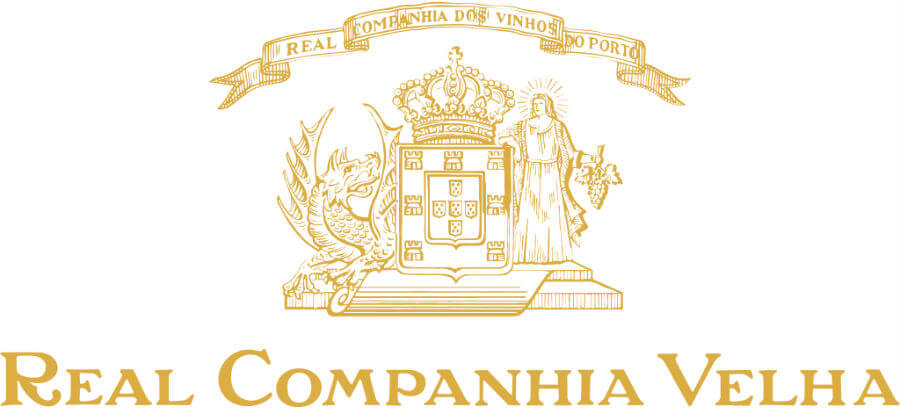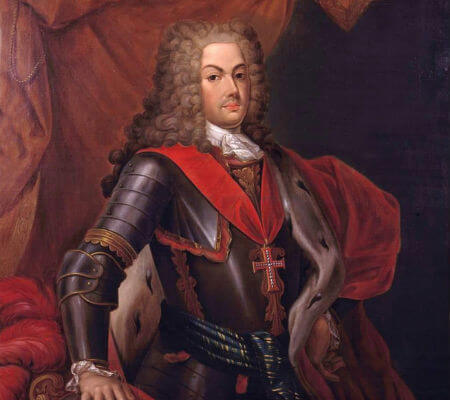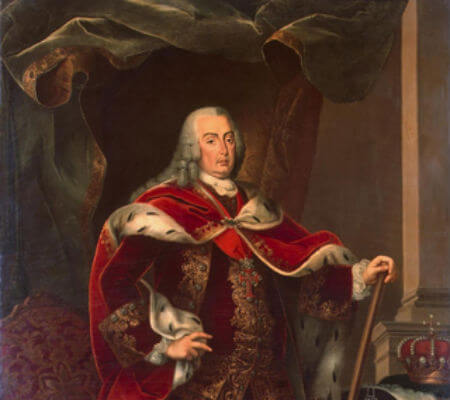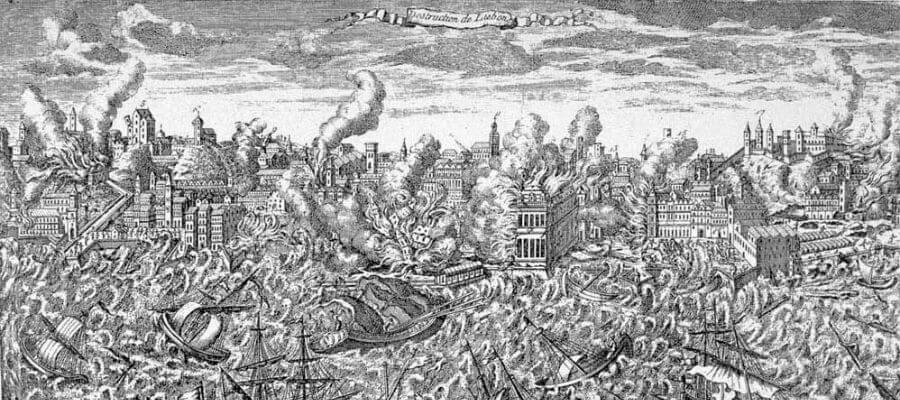Text João Barbosa | Translation Jani Dunne
Some companies have such a long history that it feels as though they need more years than they actually have to tell the whole story. That is the case of Companhia Geral da Agricultura das Vinhas do Alto Douro (Real Companhia Velha), created in 1756, much due to who founded it. Before the wine comes the history.

Real Companhia Velha logo in realcompanhiavelha.pt
Some people are ahead of their time and, among them, there are some who become greater than time. This privilege is granted to heroes – and also to some crooks, but they’re not celebrated. For example, Sebastião José de Carvalho e Melo.
Relax! I really must! I promise to end this text with the word terroir. For now, let’s pretend it’s September – I will explain this in the third chapter.
Born in Lisbon on May 13th 1699 to a family of minor nobility. It is not even clear if he was a majorat or if the crest truly belonged to his family; they say the lineage had ended and our man took this opportunity to use the family name, which was the same, and to even switch his heraldic coats of arms. However, he adopted this title and the respective Carvalho family crest for the rest of his life. He had no right to use “Dom” (meaning Sir, applied to aristocrats, noblemen, and royalty) in front of his name… not even after he climbed the social hierarchy is there mention of such privilege being awarded.
In 1723, he married Teresa de Noronha e Bourbon Mendonça e Almada. He thus jumped up on the social scale… however, he had to kidnap the bride because the lady’s family believed him to be of very low status… albeit still noble.
These are important events in the life of a common man, yet almost meaningless in the life of one of the biggest Portuguese and European statesmen. Sebastião de Carvalho e Melo was a soldier and a diplomat.
Sebastião de Carvaho e Melo was promoted to ambassador in 1738 in London. That was where he started to get to know the European elite. On September 14th 1744, he “bought the winning lottery ticket” – he became an ambassador in Vienna.
The prize meant marriage, on December 13th 1745, to Countess Maria Leonor Ernestina Daun. Through her, he got to the Archduchess of Austria, Maria Teresa, chief of the House of Habsburg, married to Francisco de Lorena, Emperor of the Holy Roman-German Empire.
Maria Teresa of Austria is one of the greatest figures of enlightened despotism, and was the grand-niece of the Queen of Portugal… When Dom João V died and Dom José rose to power, Sebastião de Carvalho e Melo climbed to the highest position anybody could attain: Secretary of State, the equivalent of the current Prime Minister.

Dom João V, painted by Miguel António do Amaral

Dom José, painted by Miguel António do Amaral
Around 9.30am of the 1st of November 1755, the ground shook. With its epicentre in Portugal’s most South-western point, Cape São Vicente, an earthquake with a magnitude of 9.0 on the Richter scale (estimated) shattered the Southern part of the country and devastated Lisbon. As if that were not enough, besides the aftershock, a tidal wave arose with waves perhaps as high as 65 feet, and a fire that lasted for days.

Lisbon, 1755 Earthquake
Lisbon was visited by great figures of the Enlightenment. Voltaire was very shocked with the state of the once rich and proud Portuguese capital, one of the biggest and most majestic of its time.
Paço da Ribeira (royal palace) was brought down, just like the brand new Opera Theatre, right next-door and which had opened six months beforehand. The Secretary of State decreed: “Bury the dead and take care of the living!”
Sebastião de Carvalho chose modernity, from the style of the buildings to the width of the streets and the grid plan. But Lisbon was not the only target; a year later, he founded an iconic company based on an innovative concept: terroir.
Contacts
Real Companhia Velha
Rua Azevedo Magalhães 314
4430-022 Vila Nova de Gaia
Tel: (+351) 22 377 51 00
Fax: (+351) 22 377 51 90
E-mail: graca@realcompanhiavelha.pt
Website: realcompanhiavelha.pt




Leave a Reply